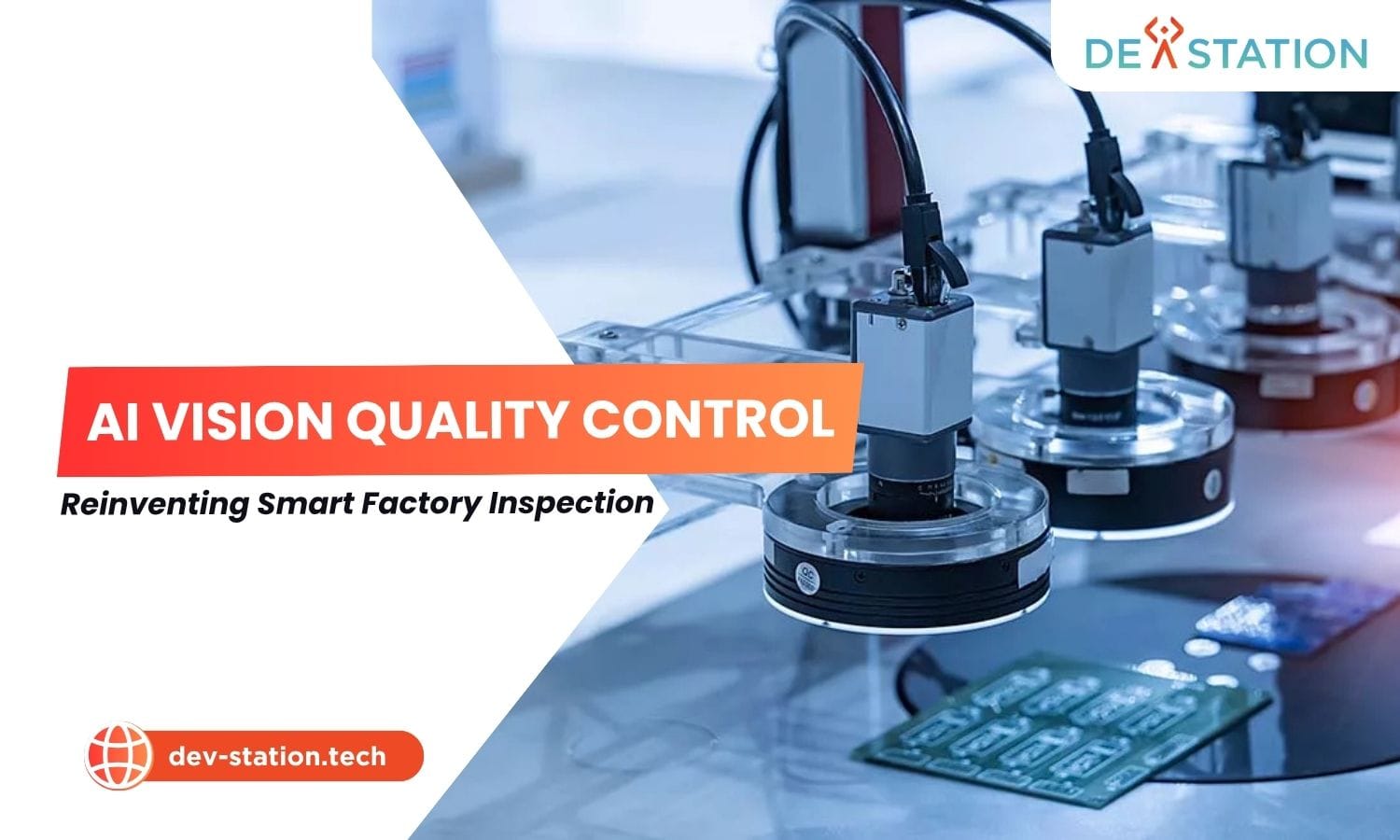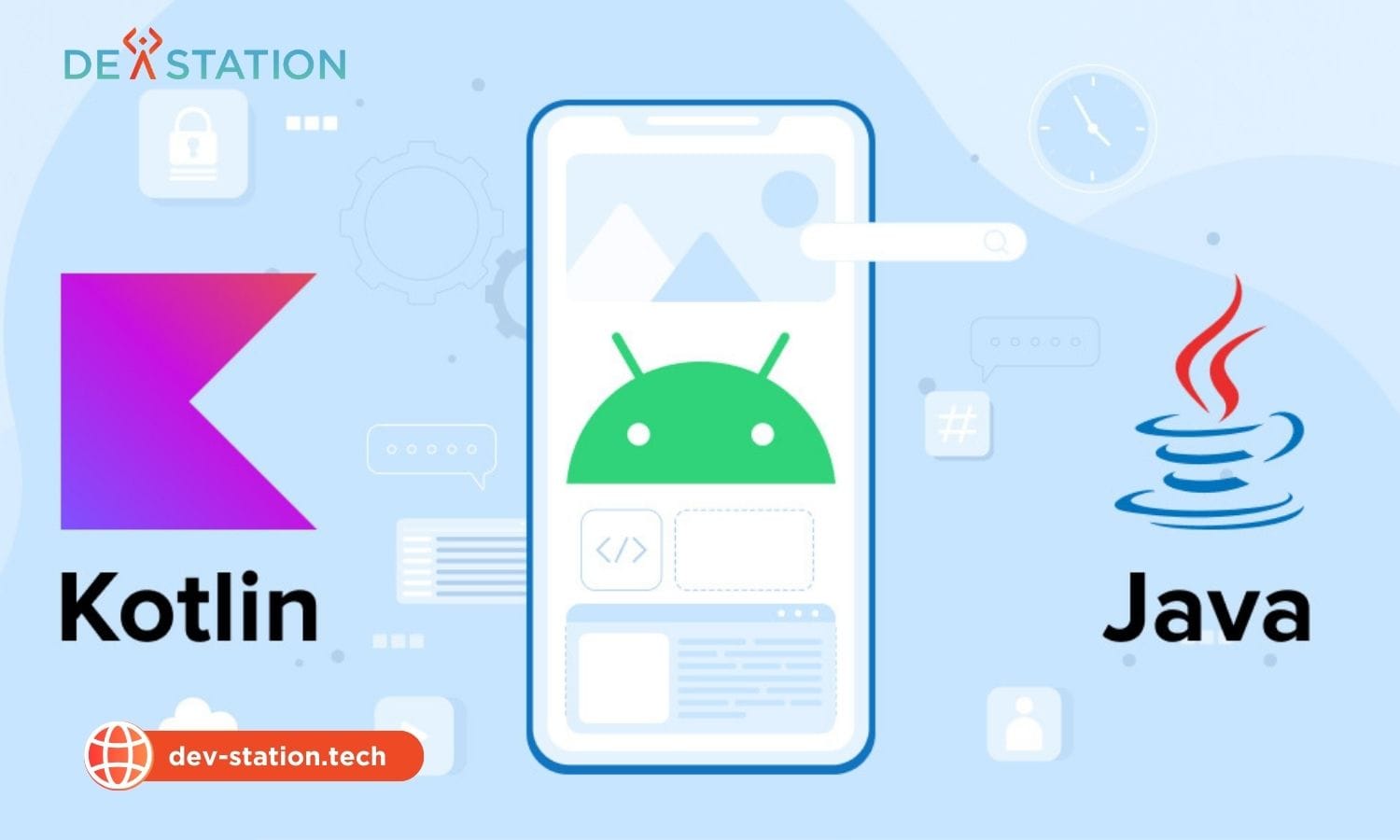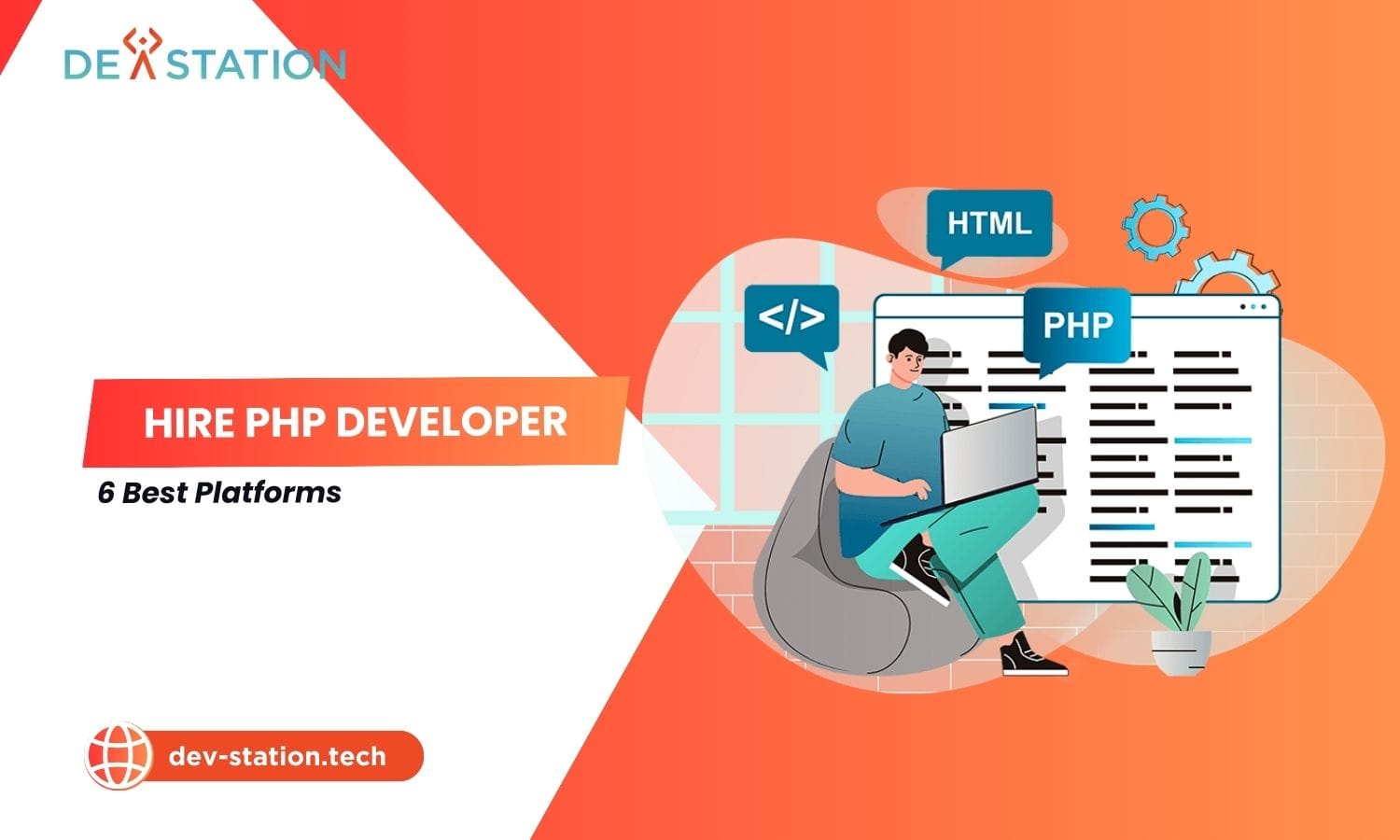AI vision quality control manufacturing integrates intelligent algorithms with high-resolution cameras, offering a transformative solution to outdated inspection methods, a process dev-station.tech has perfected. Dev Station Technology empowers smart factories to achieve near-perfect accuracy, dramatically boosting throughput and ensuring unparalleled product integrity from production to delivery. This evolution in machine vision and automated optical inspection is pivotal for modern quality assurance.
Contents
ToggleHow Does AI Vision Revolutionize Quality Inspection?
AI vision revolutionizes quality inspection by replacing subjective human sight with objective, data-driven analysis from connected IoT cameras, enabling real-time, superhuman speed and accuracy in defect detection. This automated visual inspection system operates 24/7 without fatigue, learning and adapting to new defects over time.
The integration of Artificial Intelligence into visual inspection systems marks a pivotal shift in manufacturing. Traditional quality control, while foundational, has always been constrained by the limits of human ability. Today, the synergy between AI algorithms and the Industrial Internet of Things (IIoT) creates a closed-loop system that not only finds flaws but actively improves the manufacturing process. At its core, this technology uses machine learning models, often deep neural networks, trained on vast datasets of product images. These models learn to distinguish between acceptable products and those with defects, down to the most microscopic anomaly.
Connected IoT cameras, placed at critical points along the production line, act as the eyes of the system. They capture high-resolution images or video streams that are fed into an AI inference engine, which can be located on-premise (edge computing) for low latency or in the cloud for massive processing power. The analysis happens in milliseconds. Instead of a human operator inspecting one part every few seconds, an AI vision system can inspect hundreds of components per minute with relentless consistency. This approach to iot in manufacturing is not just about speed; it is about creating a rich, digital record of quality for every single item produced.
What Are the Limits of Manual Quality Control?
Manual quality control is fundamentally limited by human error, fatigue, and subjectivity, leading to inspection delays and inconsistent results. Even the most skilled inspectors can have an error rate of 20-30% when performing repetitive visual tasks, a gap that AI vision closes with objective precision.
For decades, the final check on product quality has rested in the hands of human inspectors. While their expertise is valuable, this manual process is fraught with inherent challenges that impact efficiency, cost, and brand reputation. The primary limitation is human fallibility.
- Subjectivity and Inconsistency: What one inspector considers a minor cosmetic flaw, another might flag as a critical defect. This variability leads to inconsistent quality standards and can depend on factors like mood, time of day, or personal bias.
- Fatigue and Error Rate: Repetitive visual inspection is mentally draining. Studies have shown that human performance degrades significantly over a single shift, leading to higher error rates. A momentary lapse in concentration can mean a defective product reaches the consumer.
- Speed and Scalability: A human inspector can only check one item at a time. In a high-volume production environment, this creates a major bottleneck. Manufacturers must either slow down production or hire more inspectors, both of which increase costs. AI vision systems scale effortlessly with production speed.
- Inability to See the Invisible: Human eyes cannot detect microscopic cracks, subtle color variations, or internal defects visible only through specific light spectra. AI-powered systems, equipped with specialized cameras, can analyze data far beyond the range of human sight.
What Common Defects Can AI Vision Automatically Detect?
AI vision systems automatically detect a vast range of defects, including surface flaws like scratches and cracks, dimensional inaccuracies, component misalignment, incorrect labeling, and the absence of required parts. This machine vision capability ensures comprehensive quality assurance across various industries.
The power of AI-driven defect detection AI lies in its versatility. By training the models on specific defect types, manufacturers can create a highly tailored quality control process. At Dev Station Technology, we have implemented automated visual inspection solutions that identify a wide spectrum of issues.
| Defect Category | Specific Examples | Industry Application |
|---|---|---|
| Surface Flaws | Scratches, dents, cracks, bubbles, stains, paint imperfections | Automotive, Electronics, Glass Manufacturing |
| Assembly & Positional Errors | Misaligned components, missing screws or parts, incorrect orientation | Electronics Assembly, Consumer Goods |
| Packaging & Labeling | Incorrect barcodes, smudged labels, misprints, damaged packaging | Pharmaceuticals, Food & Beverage |
| Dimensional Analysis | Incorrect measurements, warping, shape deformities | Aerospace, Medical Devices |
For instance, in electronics manufacturing, an AI vision system can inspect a printed circuit board (PCB) in under a second to verify that all solder points are correct and no components are missing or misaligned. In the automotive sector, it can scan a car body for minute paint drips or surface scratches that are nearly invisible to the naked eye. This level of detail is a core benefit of industrial iot in manufacturing.
How Do You Integrate AI Vision Systems with Production Lines?
Integration with production lines is achieved by enabling data sharing between the AI vision system and industrial control systems like PLCs, SCADA, or a MES. This connection allows the AI to receive triggers to capture an image and send signals back to trigger actions, like ejecting a faulty part.
A standalone AI vision system is useful, but its true power is unlocked when it becomes an integrated part of the factory’s nervous system. Dev Station Technology focuses on creating seamless integration pathways to ensure the vision system is not just an observer but an active participant in the production workflow. Here is a step-by-step overview of the process:
- Step 1: Physical Setup. High-resolution IoT cameras and appropriate lighting are installed at a key inspection point on the conveyor belt or assembly station. The setup is designed to capture clear, consistent images of every product.
- Step 2: Triggering Mechanism. A sensor (like a photoelectric sensor) or a signal from a Programmable Logic Controller (PLC) tells the camera the exact moment to capture an image as a product passes by. This ensures perfect timing and synchronization.
- Step 3: Data Processing and Analysis. The captured image is sent to the edge or cloud AI inference engine. The AI model analyzes the image in milliseconds and generates an outcome: pass or fail, along with defect classification if applicable.
- Step 4: Action and Feedback Loop. The AI system sends a signal back to the PLC. If a defect is found, the PLC can trigger a physical action, such as activating a pneumatic ejector to remove the part from the line or sounding an alarm.
- Step 5: Data Logging and Analytics. All inspection data, both for good and bad parts, is logged in a Manufacturing Execution System (MES) or a central database. This data is invaluable for real-time production monitoring iot, allowing engineers to identify trends and find the root cause of recurring defects. For instance, if the AI consistently flags a specific type of scratch, it might point to a misaligned machine upstream that needs predictive maintenance iot. The insights also enhance iot supply chain visibility manufacturing by ensuring only quality parts move forward.
This integration creates a smart, autonomous quality control loop that elevates the entire production process, moving from reactive defect detection to proactive quality improvement. It can even influence the digital twin in manufacturing by providing real-world quality data to the virtual model.
How Is the Performance of AI Vision Systems Measured?
Performance is measured using key metrics like accuracy, speed (inspections per minute), false positive rate, and false negative rate. The ultimate business metric is Return on Investment (ROI), calculated by comparing the cost of implementation against savings from reduced waste, fewer recalls, and increased throughput.
Evaluating the effectiveness of an AI vision system requires looking at both technical performance and business impact. At Dev Station Technology, our computer vision development services focus on delivering measurable results across these key areas.
What Are the Key Technical Metrics?
Key technical metrics include accuracy (often exceeding 99%), precision, recall, and processing speed, which together determine the system’s reliability and its ability to keep pace with production.
- Accuracy: The percentage of correct predictions (both good and bad parts). A well-trained system typically achieves over 99% accuracy.
- False Positive Rate: The percentage of good parts that are incorrectly flagged as defective. A low rate is crucial to avoid unnecessary waste.
- False Negative Rate: The percentage of defective parts that are incorrectly passed as good. This is the most critical metric, as it directly relates to the number of faulty products that could reach a customer.
- Speed: Measured in inspections per minute or parts per second. The system must be fast enough to match or exceed the production line’s speed.
What Does the Return on Investment (ROI) Look Like?
ROI is often realized within 12-18 months. A case study from a major electronics manufacturer showed a 40% reduction in scrap material and a 25% increase in production line speed after implementation, leading to millions in annual savings.
Let’s consider a hypothetical case study. A mid-sized manufacturing plant produces 10 million units per year. Their manual inspection process has a 5% false negative rate, meaning 500,000 defective units could potentially ship. The cost of a recall or warranty claim is $50 per unit.
Potential Annual Cost of Defects: 500,000 units * $50/unit = $25,000,000
An AI vision system, with a 99.9% accuracy rate, would reduce the false negative rate to 0.1%.
New Potential Annual Cost of Defects: (10,000,000 * 0.001) units * $50/unit = $500,000
This represents an annual saving of $24.5 million in recall and warranty costs alone. When you add savings from reduced labor, less wasted material, and the ability to optimize processes like iot energy management manufacturing, the ROI becomes compellingly clear. The future of quality control is here, and it is powered by intelligent, connected systems.
Ready to Reinvent Your Quality Control?
Embrace the future of smart manufacturing and eliminate defects with a powerful AI Vision solution. Dev Station Technology provides end-to-end services to design, build, and integrate intelligent inspection systems tailored to your unique production environment.
Learn how our expertise can drive your ROI, improve brand reputation, and create a zero-defect workflow. To discover more about our advanced solutions, we invite you to explore our services at dev-station.tech or contact our team directly for a consultation at sale@dev-station.tech.





